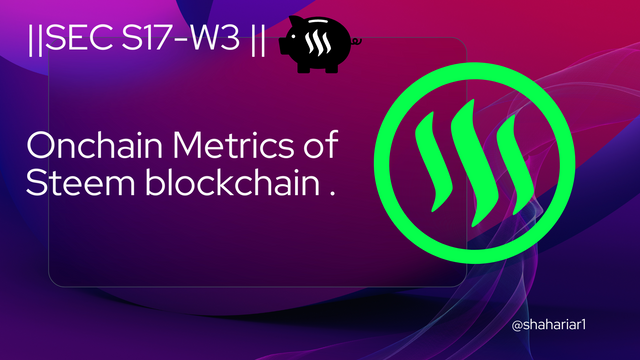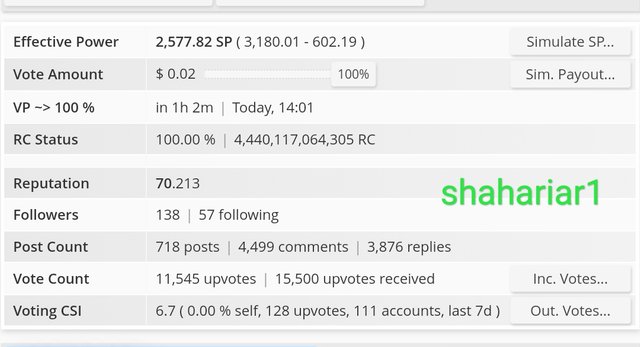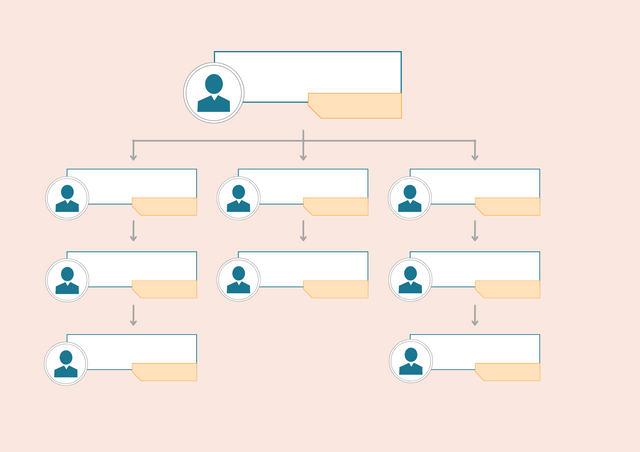Contest Link 👇
SEC S17-W3 || Onchain Metrics of Steem blockchain. I invite some of the skilled users I know to participate in this contest. "Honorable Mentions: @mostofajaman @radjasalman @ripon0630
 |
|---|
The evaluation of user activity and the overall health of a blockchain network like Steem rely heavily on onchain metrics. Here are a portion of the principal onchain measurements indicators:
Amount of all transactions: By displaying the total number of transactions carried out on the blockchain, this metric offers an overview of the activity level of the network.
Dynamic Wallets: The count of wallets that have cooperated with the blockchain inside a particular time span shows client commitment and the organization's client base.
Gas Consumed: The total amount of "gas," or network fees, paid for transactions is reflected in this indicator, which can indicate demand for blockchain transactions1.
Holders for the Top Wallet: It is possible to gain insight into the concentration of wealth and potential market influence by analyzing the distribution of tokens among the top wallet holders.
TVL (Complete Worth Locked): TVL Steemit the complete worth of resources secured in the blockchain's savvy contracts, which is an indication of the organization's utility and trust.
 |
|---|
These metrics are important because they give a clear picture of how the blockchain works and how users act. A healthy and active network, for instance, typically reveals a high total transaction count and active wallets. The concentration of top wallet holders can indicate potential risks or stability in the distribution of tokens, while gas spent can highlight the blockchain's scalability and efficiency.

"There are several steps involved in analyzing the Steem blockchain's Onchain Metrics data to comprehend user engagement trends and community evolution:
Information Collection: Collect information from the Steem blockchain, such as wallet addresses, transaction details, and other pertinent on-chain data.
Information Processing: In order to guarantee accuracy and relevance for analysis, clean and organize the collected data.
Identification of metrics: The number of active users, transaction volume, and distribution of tokens are all important metrics that can be used to gauge user engagement and community expansion.
Pattern Analysis: Utilize statistical instruments to spot over time patterns and trends in the metrics. This can include time-series investigation to follow changes and development.
Visualization: Visually representing the data in the form of charts and graphs makes it simpler to identify patterns and comprehend the community's development.
Analyses Comparatively: To contextualize the findings within the larger crypto ecosystem, compare the Steem blockchain data with that of other blockchains that are comparable to it.
Knowledge Generation: The Steem ecosystem's overall health, user behavior, and community engagement can all be deduced from the data.
Reporting: Make a comprehensive report out of the findings so that stakeholders can use it to make informed decisions.
For a more definite investigation, you can use different on-chain examination devices and stages that offer experiences into blockchain information. By looking at wallet balances and transaction data, these tools can provide insights into the cryptocurrency market that can be implemented. They can assist you in comprehending market sentiment and making informed decisions based on the information in the blockchain ledger.

Keep in mind that while on-chain analysis is a powerful technique, converting the raw data into useful insights necessitates a strategic approach. It's critical to constantly improve your methods and stay up to date on the most recent tools and methods in the field.

The Steem blockchain's social structure and incentive mechanisms make it difficult to interpret Onchain Metrics. Here are some particular difficulties:
Economic Activity versus Social Engagement: Because Steem is made to reward content creation and curation, not all transactions might be considered economic activity. It can be hard to tell the difference between genuine user engagement and transactions motivated by financial incentives.
Token Distribution: Governance and the direction of the platform may be affected by the distribution of STEEM tokens. Considering the potential influence of significant stakeholders, it can be difficult to analyze how tokens are distributed among users.
Content Value: The worth of content on Steem is not set in stone by local area casting a ballot. Assessing the true economic impact of content creation and curation can be challenging as a result of this.
Activity of the bot: Because they can automate voting and content creation, bots on the Steem network have the potential to skew metrics and misrepresent user engagement.
Forking Events: Steem has encountered forking occasions, like the formation of Hive. Such occasions can essentially affect on-chain measurements and require cautious thought while dissecting patterns.
Client Retention: It is essential to have an understanding of the factors that influence Steem's growth and user retention. Be that as it may, on-chain information may not give a total image of client experience and fulfillment.
Impetus Structures: Steem's prize framework boosts specific ways of behaving, which can prompt gaming the framework. It takes a sophisticated approach to determine these patterns and how they affect the ecosystem's overall health.
 |
|---|
Analyses Comparatively: Contrasting Steem and other blockchains can be troublesome because of its exceptional mix of online entertainment and blockchain innovation.
It is essential to employ a combination of on-chain analysis, user behavior studies, and an understanding of the nuances of the Steem ecosystem in order to navigate these obstacles. Also, utilizing logical apparatuses that can sift through clamor and spotlight on significant information is fundamental.

Onchain Measurements can give significant bits of knowledge into the strength of the Steem blockchain biological system. This is the way they can be utilized to survey different perspectives:
Conveyance of Casting a ballot Powers: One can comprehend the community's decentralization of decision-making by examining the distribution of STEEM tokens and the voting power that goes along with them. In an ideal ecosystem, voting power would be distributed widely rather than concentrated in a few hands.
Diversity of Content: Measurements, for example, the quantity of exceptional substance makers, the range of subjects covered, and the recurrence of posts can show the degree of content variety. A flourishing biological system ought to show a large number of dynamic substance makers and themes.
Fairness in Reward: The fairness of the reward system can be determined by analyzing how rewards are distributed among users. Onchain data can help determine whether rewards are evenly distributed or skewed in favor of particular users by revealing patterns in the allocation of rewards.
Utilizer Engagement: User engagement can be measured by the number of active addresses, transactions, and social media interactions (likes, comments, and reposts). Predictable or developing commitment proposes a solid, dynamic local area.
Activity Economical: Exchange volumes, particularly those connected with content creation and curation, can give bits of knowledge into the monetary wellbeing of the stage. Economic transactions should be steady or increasing in a healthy ecosystem.
Network Growth: The pace of new record manifestations and the standard for dependability of existing clients can flag the development and maintainability of the Steem people group.
Administration Participation: The community's involvement in the platform's future can be shown by taking part in governance-related activities like voting on proposals or witness elections.
 |
|---|
Utilizing analytical tools that can process and visualize blockchain data is essential if Onchain Metrics is to be used effectively for these evaluations. In order to arrive at meaningful conclusions regarding the health of the Steem ecosystem, this entails tracking and interpreting intricate data sets.

Onchain Metrics can be used by Steem blockchain developers to improve platform usability, increase adoption, and address scalability issues while preserving community integrity in the following ways:
"Usability Enhancements": By examining exchange times, achievement rates, and client connections with the blockchain, designers can recognize regions where the client experience can be moved along. For instance, optimizing the user interface based on patterns of user activity or streamlining the process of creating and managing accounts.
Motivation for Adoption: Onchain Metrics can show which types of content are the most engaging and what incentives encourage user participation. This data can be used by developers to improve reward systems, making them more appealing to new users and encouraging current ones to contribute more actively.
Versatility Solutions: Developers can use metrics like transaction volume, block size, and gas fees to predict future demands and comprehend the network's current load. Implementing scalability solutions like sharding or layer-two protocols that can handle more activity without compromising performance requires this information.
Integrity in the community: By monitoring voting patterns and token distribution, onchain data can assist in maintaining community integrity. This information can be used by developers to find and stop power from being centralized, as well as to make sure the reward system stays fair and decentralized.
Criticism Loop: By keeping an eye on how changes to the platform affect Onchain Metrics, developers can create a feedback loop. This takes into consideration information driven advancement, where choices are had in view of quantifiable effect as opposed to theory.
Asset Allocation: Developers can better allocate resources by comprehending the flow of tokens and resource usage, ensuring that the platform remains stable and responsive as it expands.
Security Enhancements: Security can also be improved with the help of Onchain Metrics. By breaking down examples of exchanges, designers can distinguish and address expected weaknesses or pernicious exercises on the organization.
Informed Choice Making: Admittance to thorough on-anchor information permits engineers to arrive at informed conclusions about future turns of events, like component increments or changes to the agreement system, in light of genuine utilization and local area criticism.
Steem blockchain developers can develop a more user-friendly, scalable, and secure platform that meets the needs and values of the community by effectively utilizing Onchain Metrics.

I invite you to support @pennsif.witness for growth across the whole platform through robust communication at all levels and targeted high-yield developments with the resources available.
 Click Here
Click Here | Category | Contest |
|---|---|
| Photo collect | Canva/ pixbay |
Thanks for reading the Post
28/04/2024
The End |
|---|

X promote :https://x.com/Shahari73599011/status/1784481628234064329
Downvoting a post can decrease pending rewards and make it less visible. Common reasons:
Submit
Upvoted. Thank You for sending some of your rewards to @null. It will make Steem stronger.
Downvoting a post can decrease pending rewards and make it less visible. Common reasons:
Submit
💯⚜2️⃣0️⃣2️⃣4️⃣ This is a manual curation from the @tipu Curation Project.
Also your post was promoted on 🧵"X"🧵 by the account josluds
@tipu curate
Downvoting a post can decrease pending rewards and make it less visible. Common reasons:
Submit
Upvoted 👌 (Mana: 6/7) Get profit votes with @tipU :)
Downvoting a post can decrease pending rewards and make it less visible. Common reasons:
Submit
Transactions number in one second increase is reflecting that activity of users is increasing so it is considered one of the most important metric for accessing users activities. In which way tokens are distributing and in which way content is valued at this platform all are one of the most important challenges and concerns that needs to be addressed I wish you much success in this challenge
Downvoting a post can decrease pending rewards and make it less visible. Common reasons:
Submit
Thank you very much for commenting.
Downvoting a post can decrease pending rewards and make it less visible. Common reasons:
Submit
Information collection information analysis analysis pattern analysis visualization and knowledge generation some of the important aspects when you want to check engagement level and community trends at steemit.
Your content is providing deep understanding the each and every question but there could be enhancement in your post by addingsome practical examples.
Downvoting a post can decrease pending rewards and make it less visible. Common reasons:
Submit
Thank you so much for your valuable payment. And your advice is very important for me...!
Downvoting a post can decrease pending rewards and make it less visible. Common reasons:
Submit
My pleasure that you are happy to follow on my advice 😌
Downvoting a post can decrease pending rewards and make it less visible. Common reasons:
Submit
Greetings @shahariar1
So, when we talk about "On-chain metrics," we're referring to certain measurements or data that we can gather from the Steem blockchain. These metrics give us valuable information about how things are going on the platform.
Now, in your post, you've shown a really good understanding of why these metrics are important. They help us manage and make decisions about the Steem blockchain in a smart and effective way. By looking at these metrics, we can see what's working well and what needs improvement. It's like having a roadmap that guides us in developing the platform strategically.
By demonstrating your understanding of these On-chain metrics, you're showing that you know how to use this information to make informed decisions and plan for the future. It's a valuable skill to have, and it shows that you really understand how to manage and grow the Steem blockchain. Good luck.
Downvoting a post can decrease pending rewards and make it less visible. Common reasons:
Submit
Thank you very much for coming here. You have observed the post and made a nice comment. I am happy for that.
Downvoting a post can decrease pending rewards and make it less visible. Common reasons:
Submit
Has realizado un análisis integral de los aspectos relevantes de la métricas Onchain por cuales podemos tener idea de las tendencias, preferencias y evolución de la cadena de bloques Steem.
Muchas veces me ha pasado que las métricas no reflejan la calidad de un usuario por la complejidad de incursionar en una red social donde cada usuario difiere en sus preferencias omitiendo la calidad de los contenidos que no les gustan.
Este es uno de los grandes desafíos, evitar crear desánimo o decepción en los verdaderos creadores de contenido de calidad.
Gracias por tu aporte de tu análísis.
¡Suerte y éxitos!
Downvoting a post can decrease pending rewards and make it less visible. Common reasons:
Submit
Muchas gracias señor por pasar y dejar un lindo comentario.
Downvoting a post can decrease pending rewards and make it less visible. Common reasons:
Submit
¡Saludos, buena suerte!
Downvoting a post can decrease pending rewards and make it less visible. Common reasons:
Submit